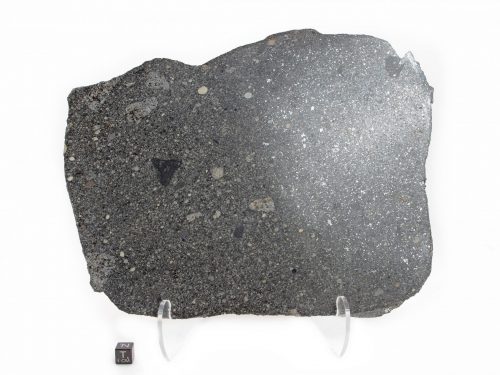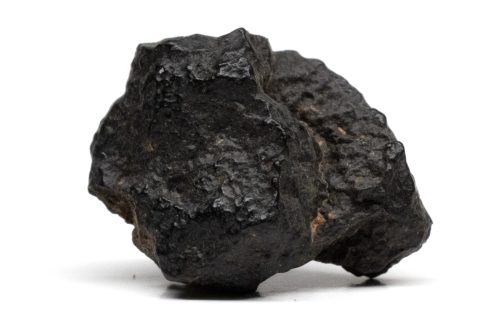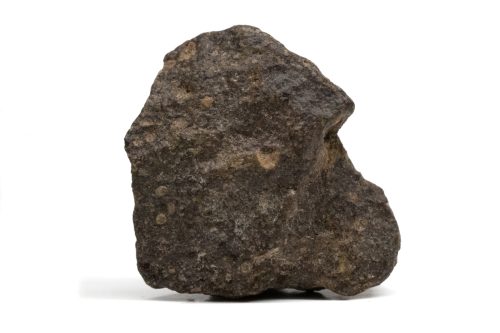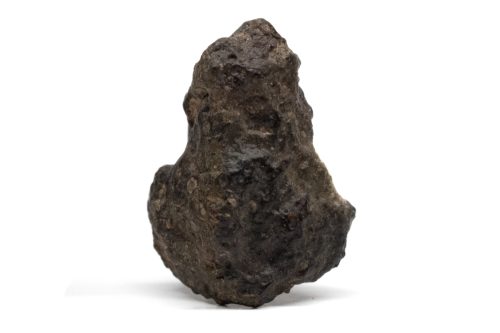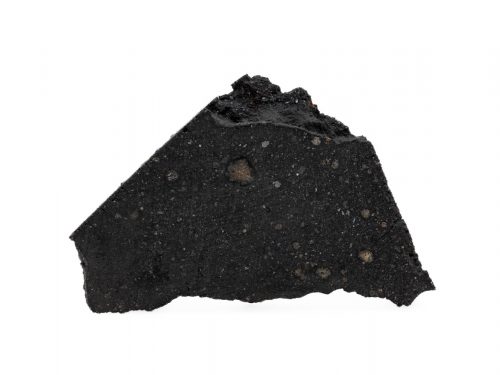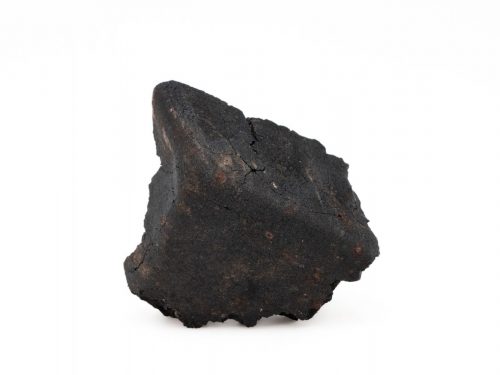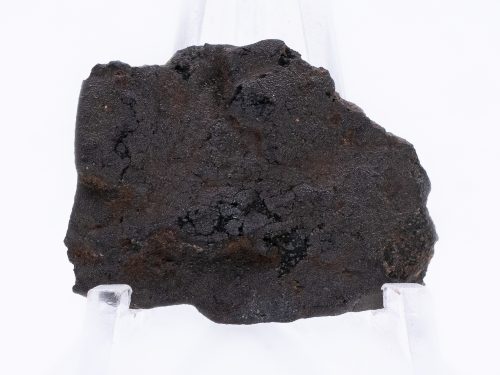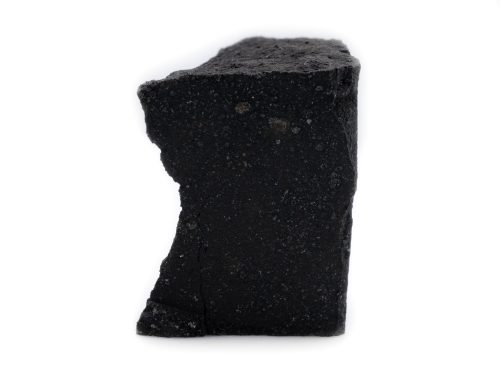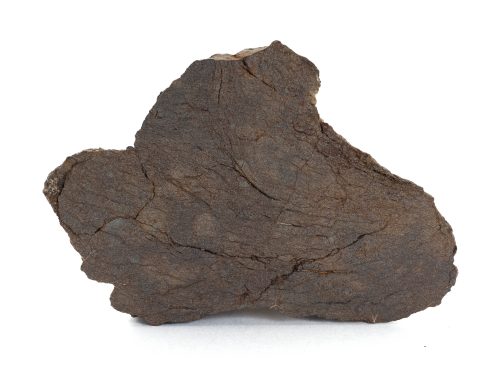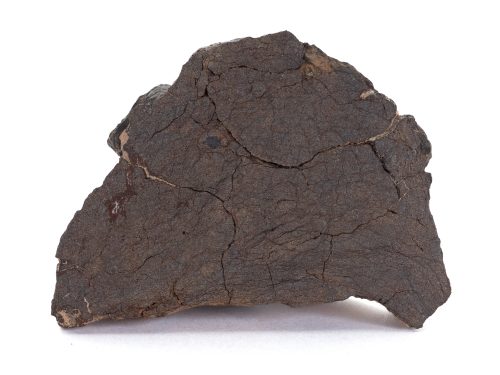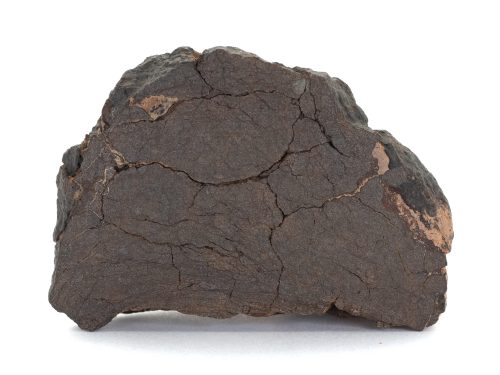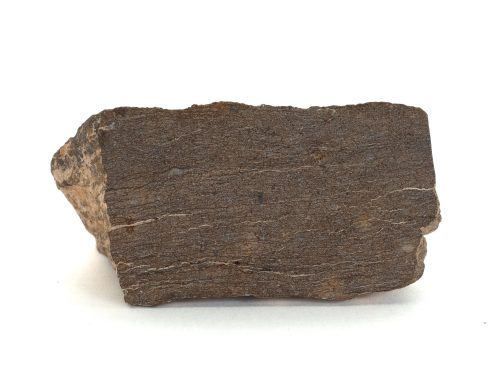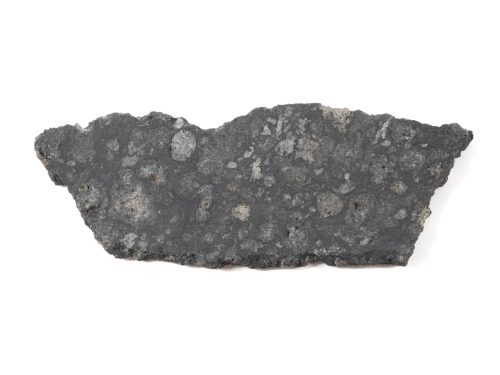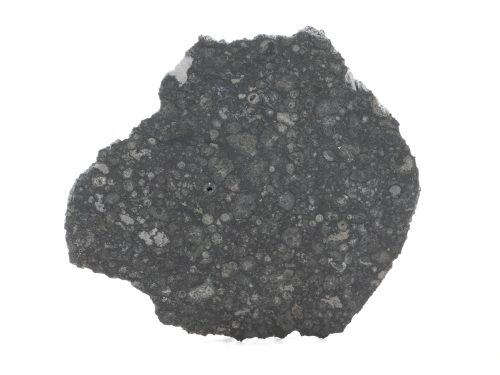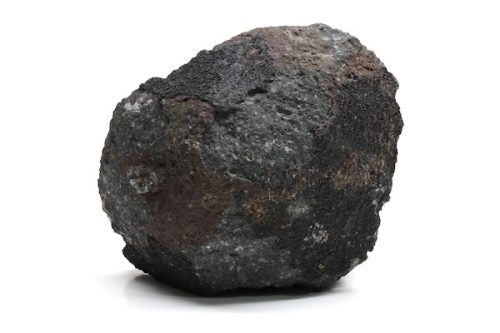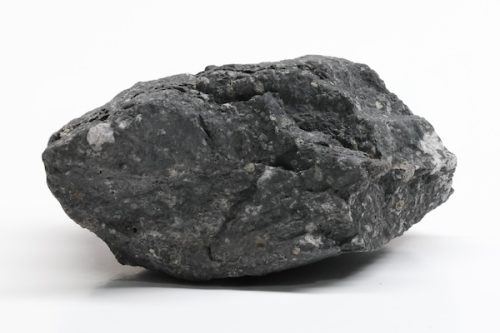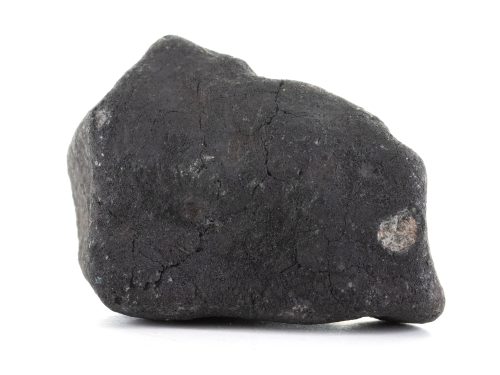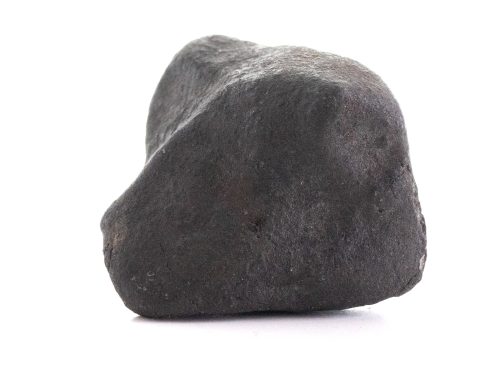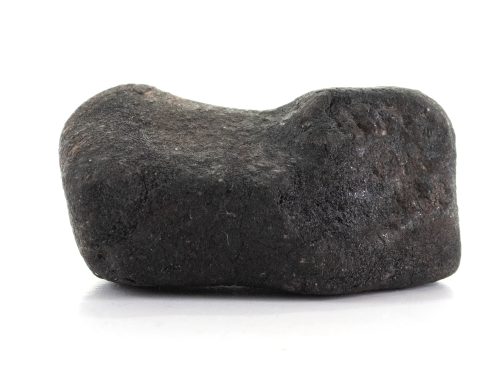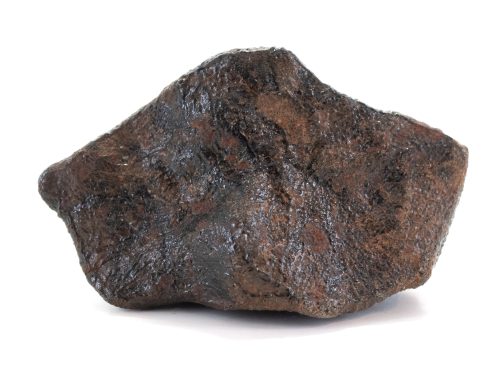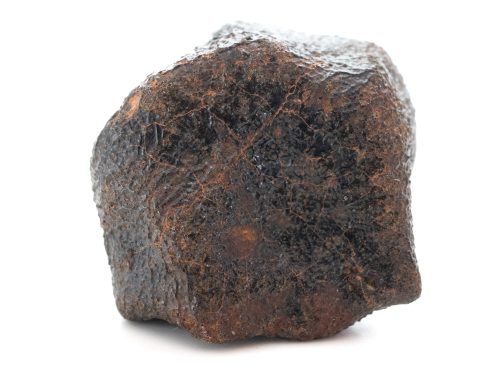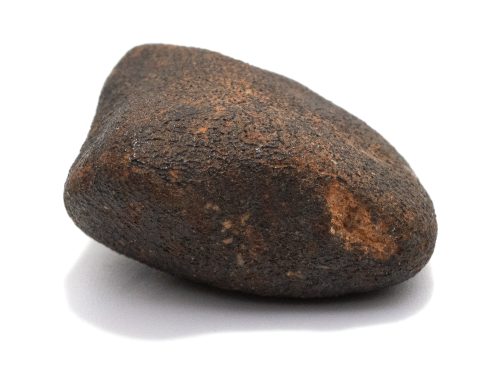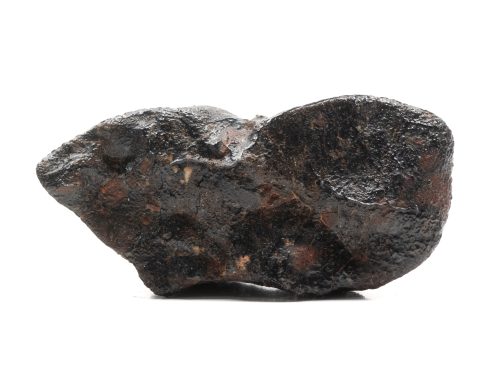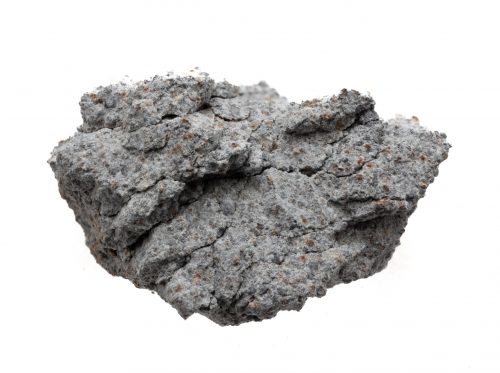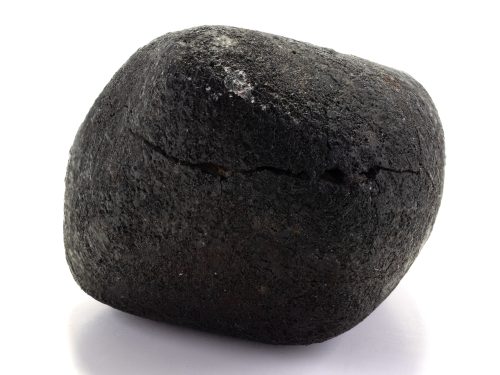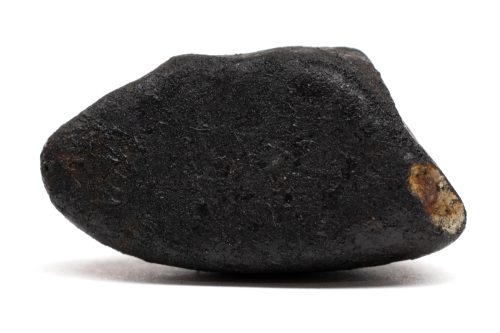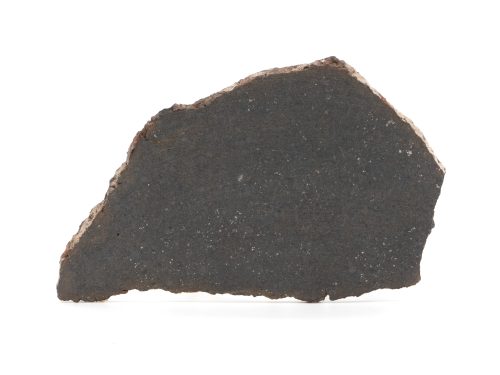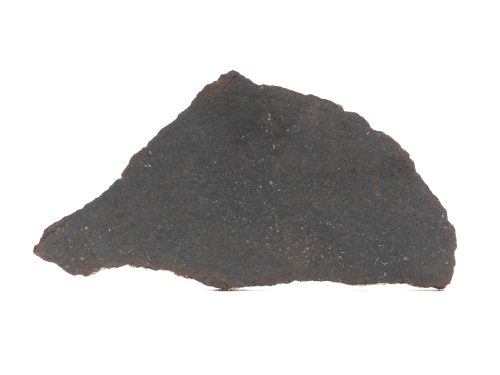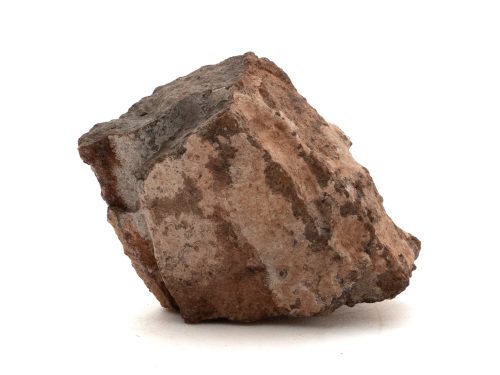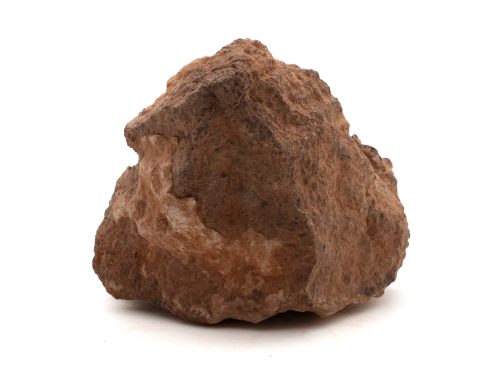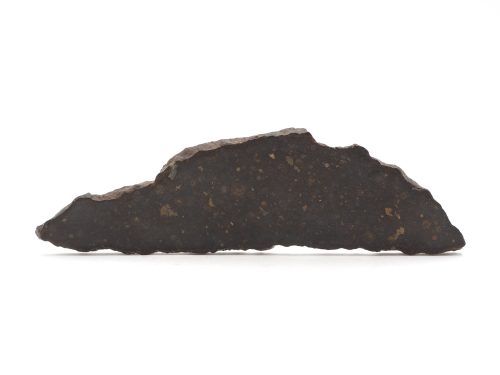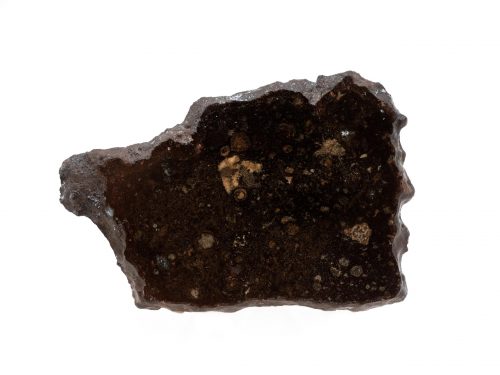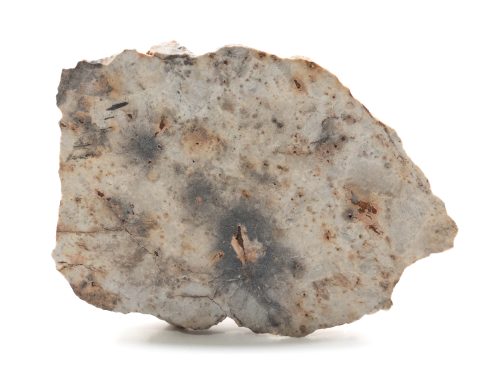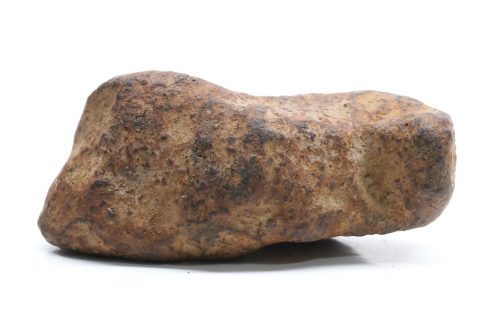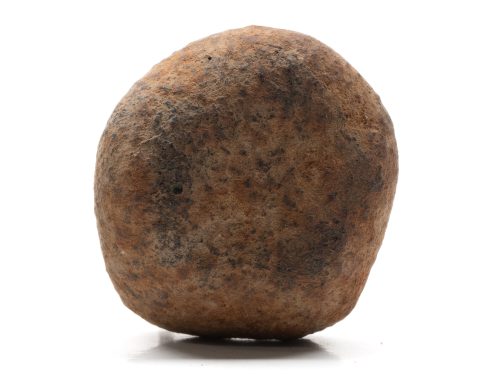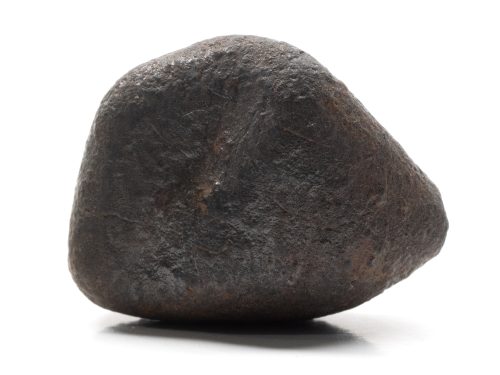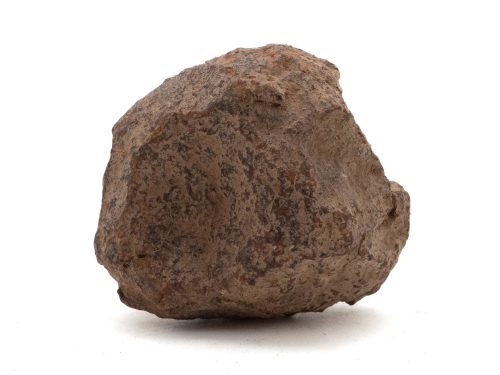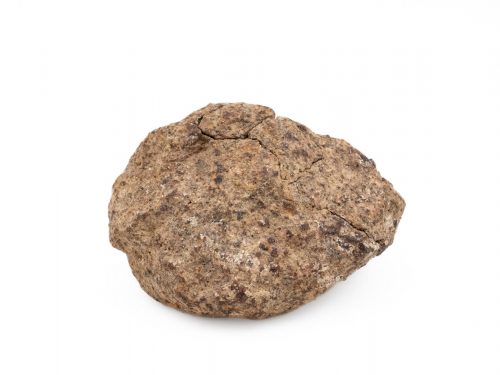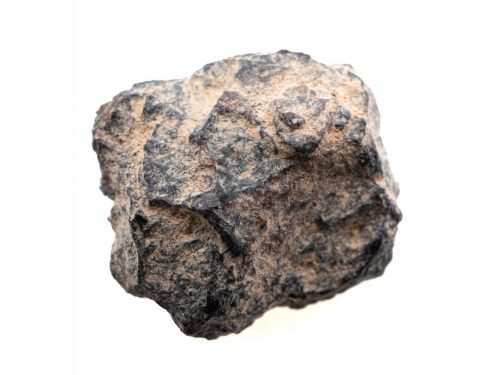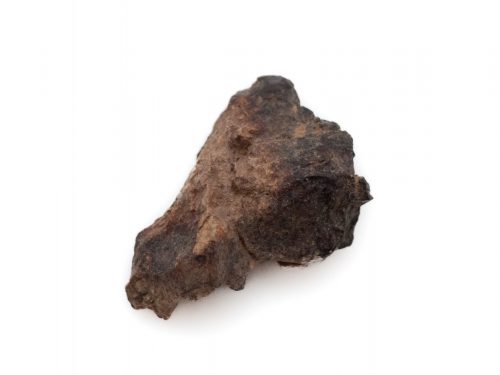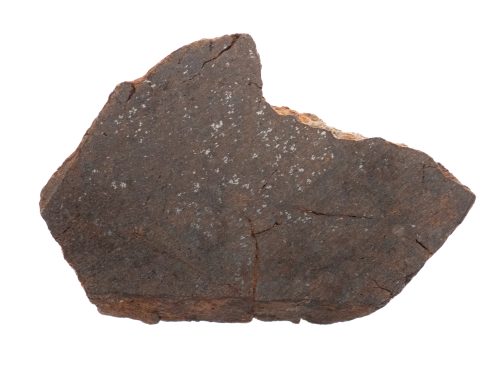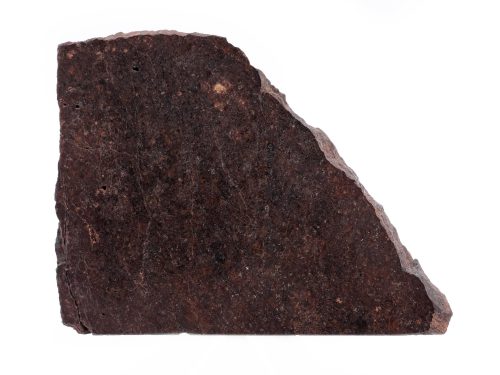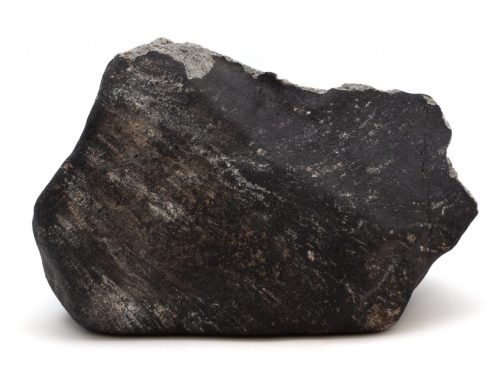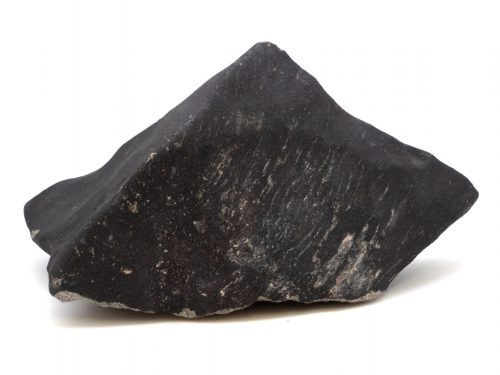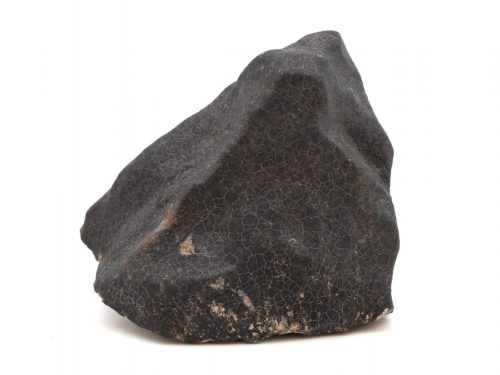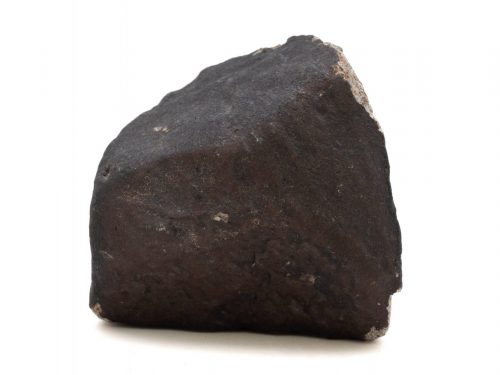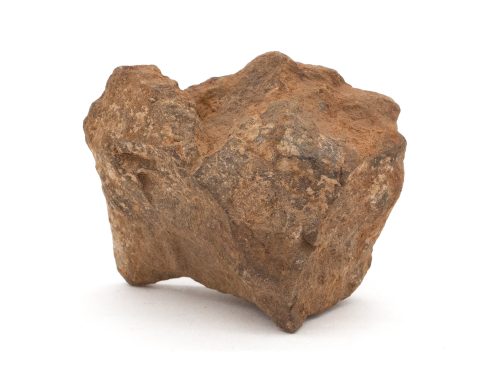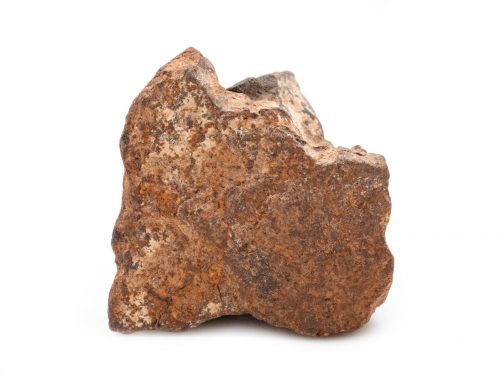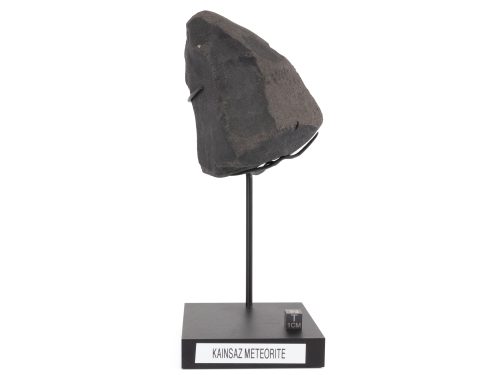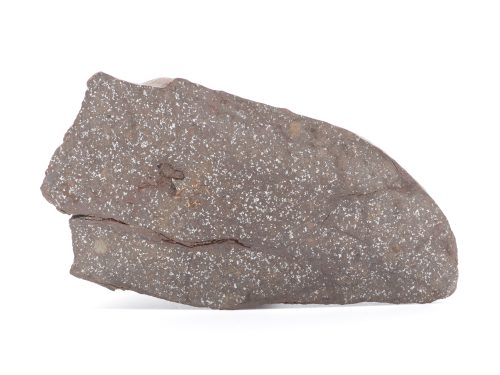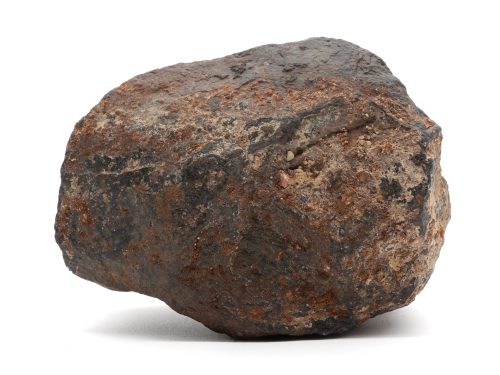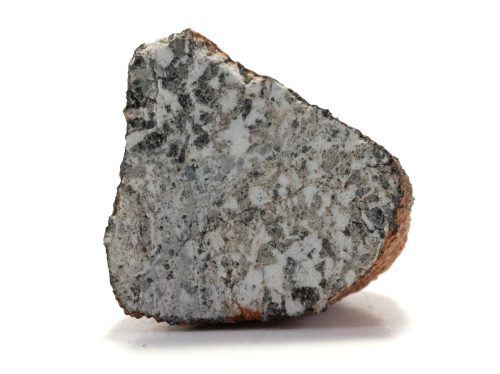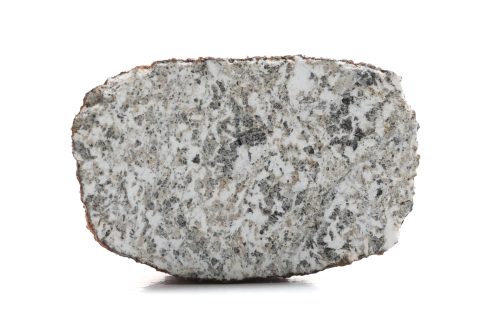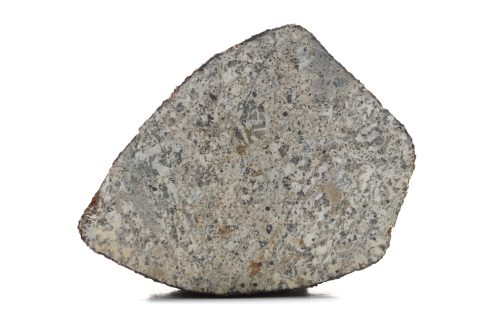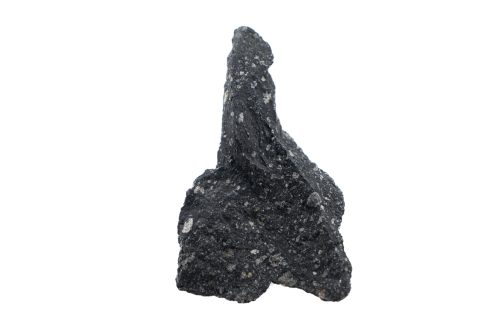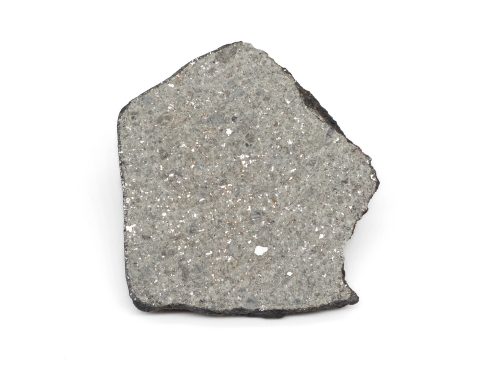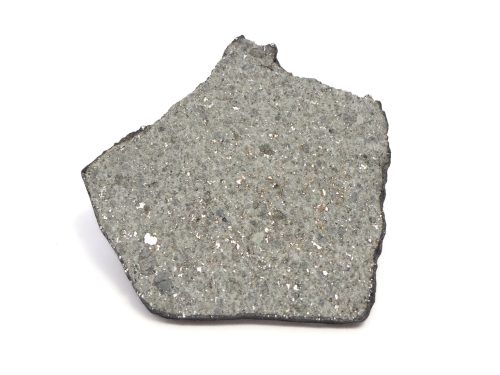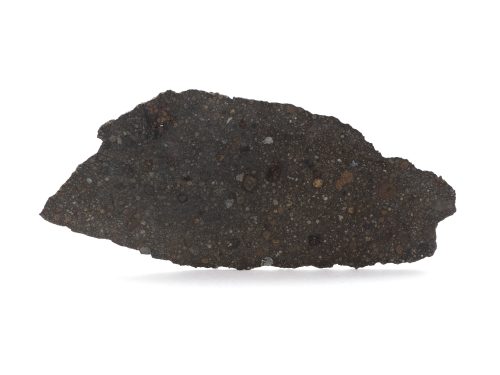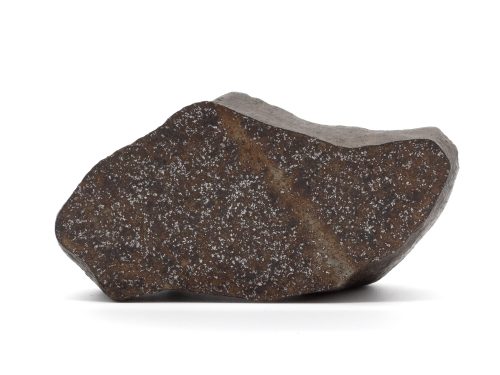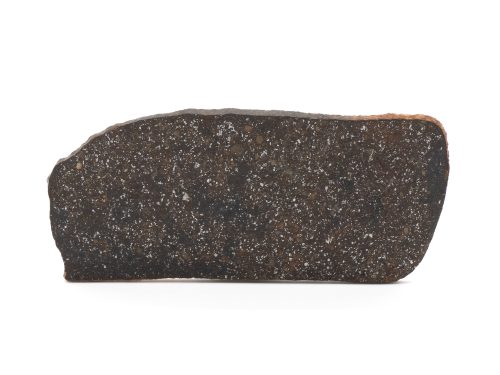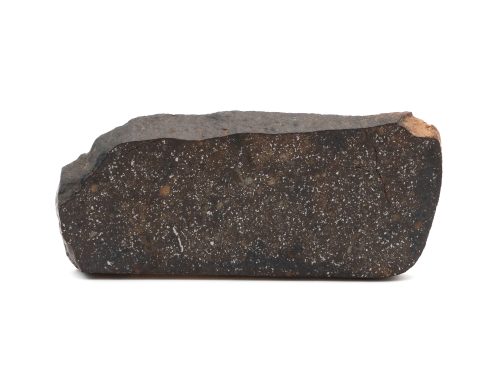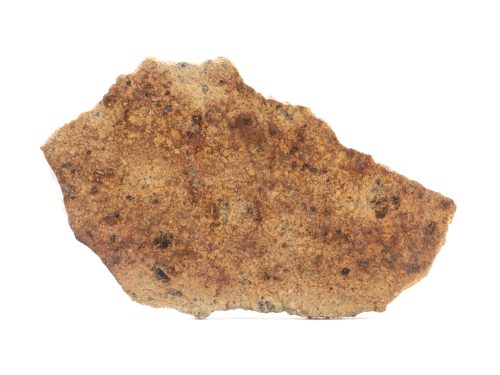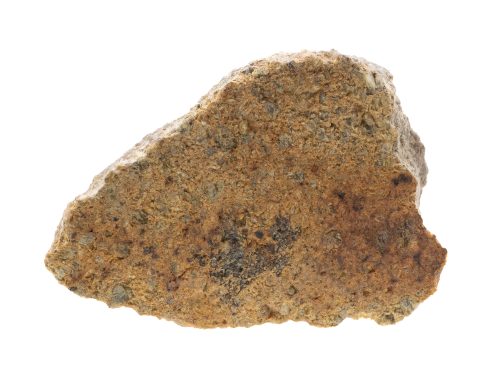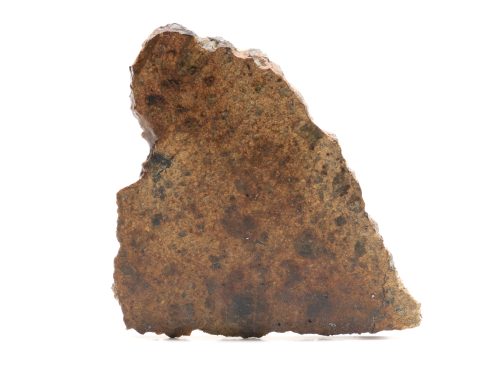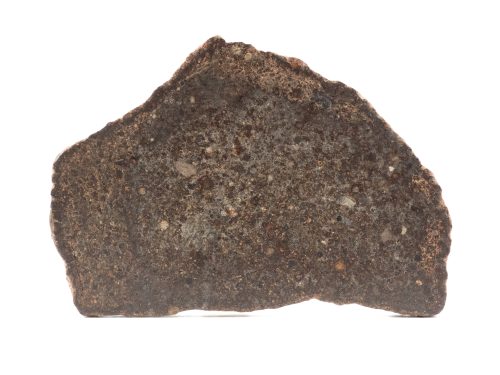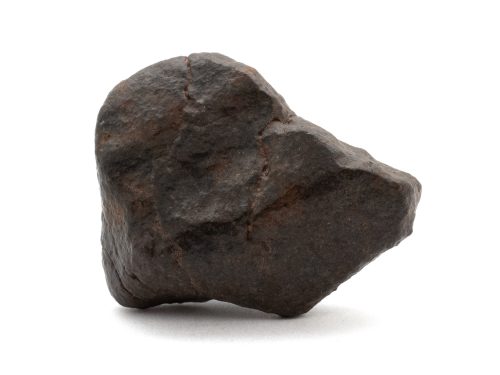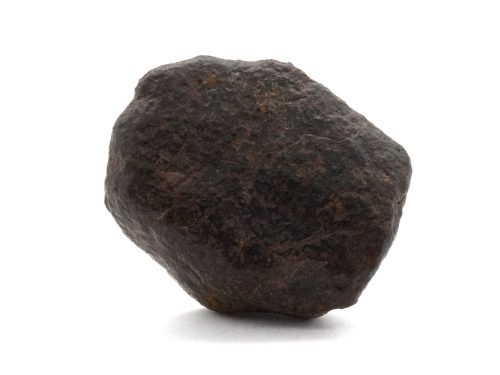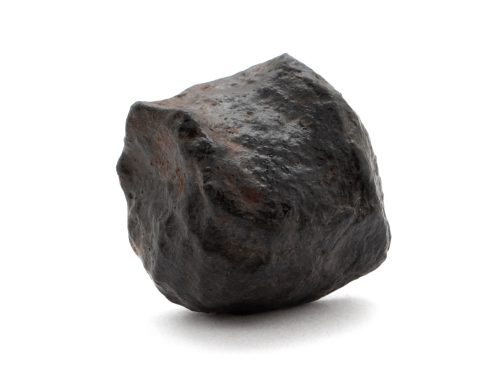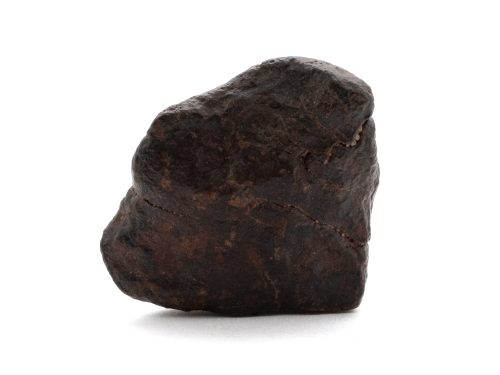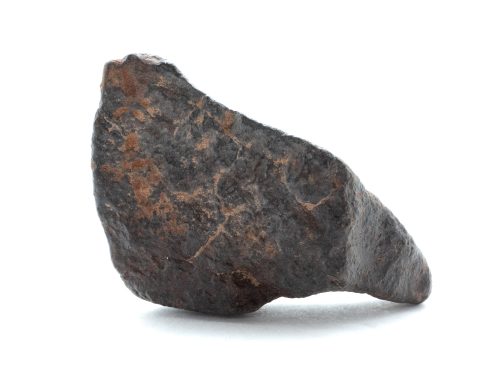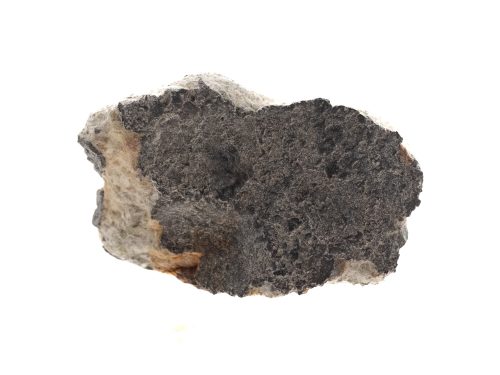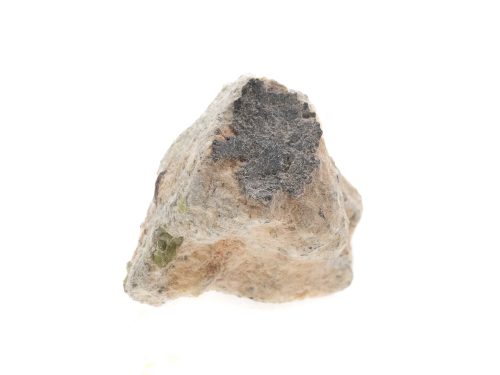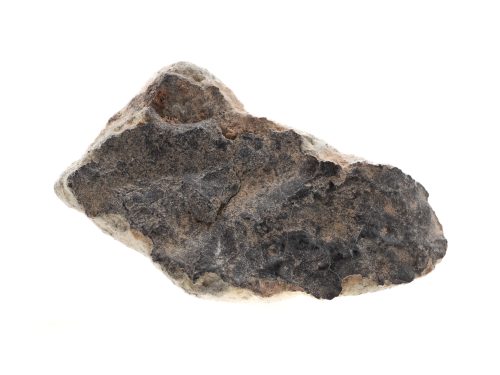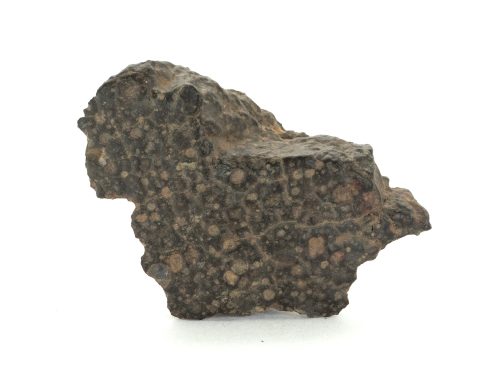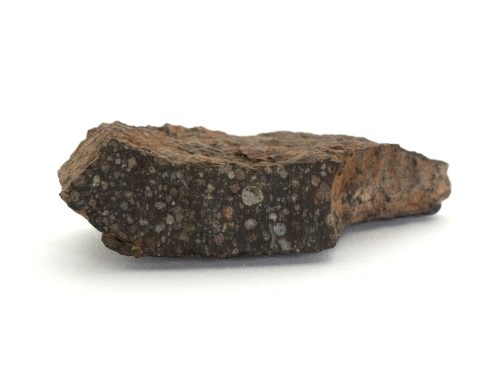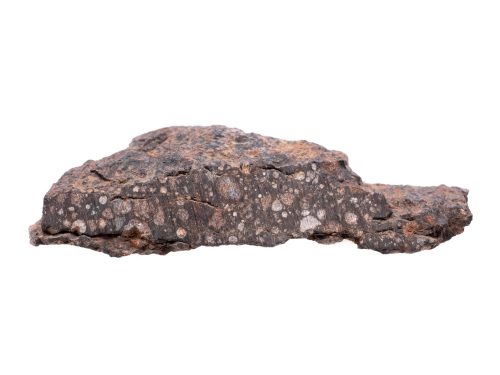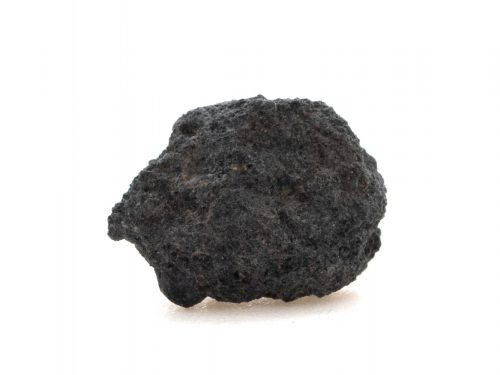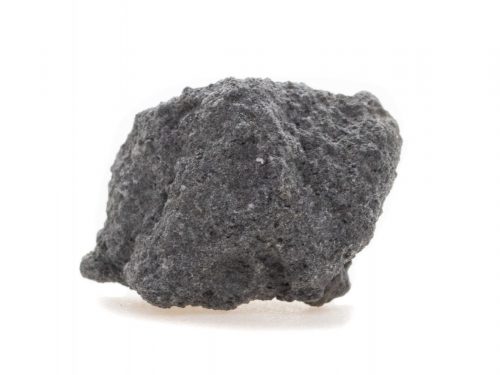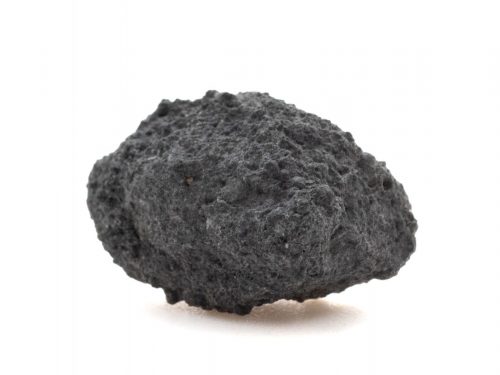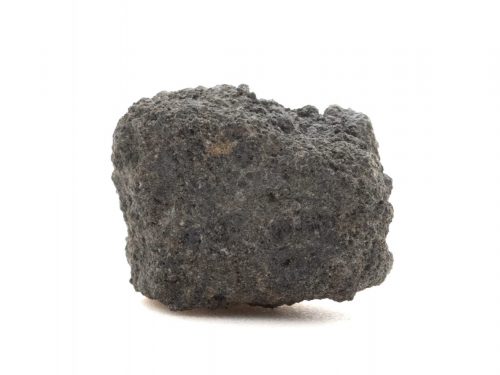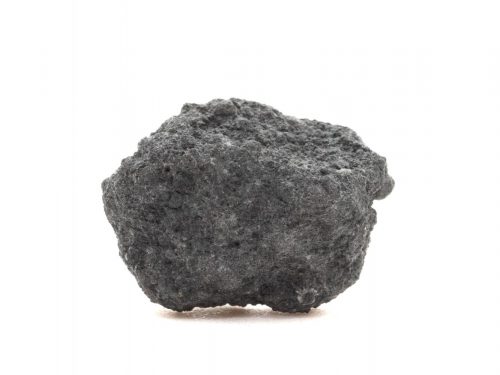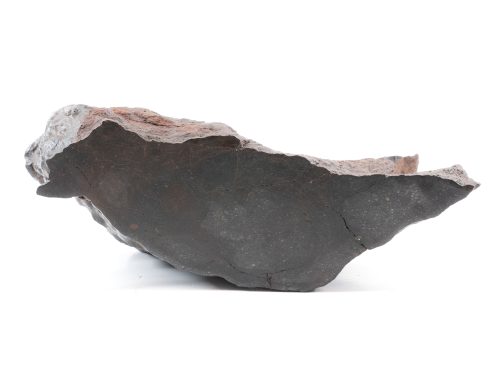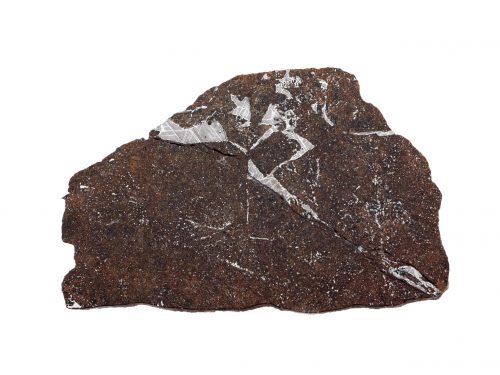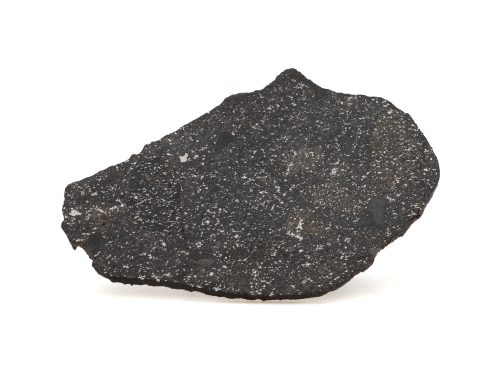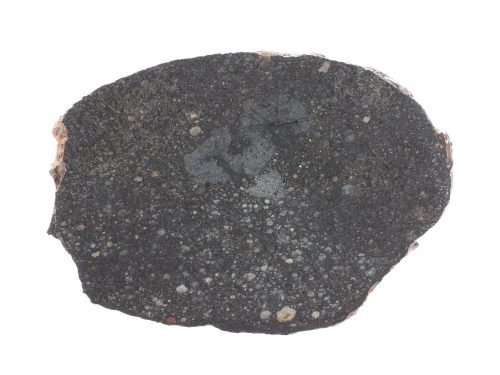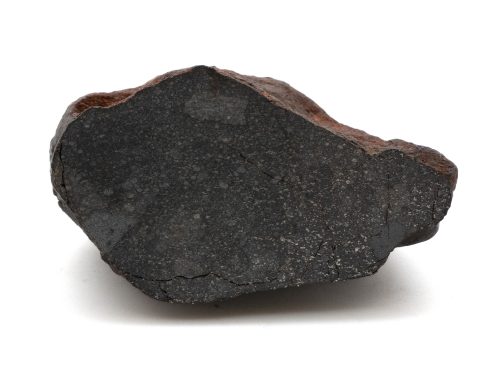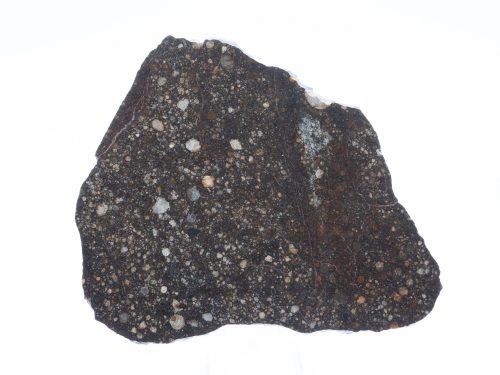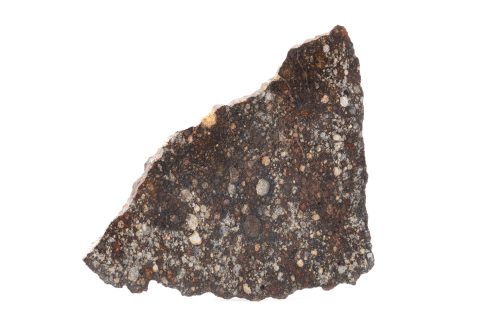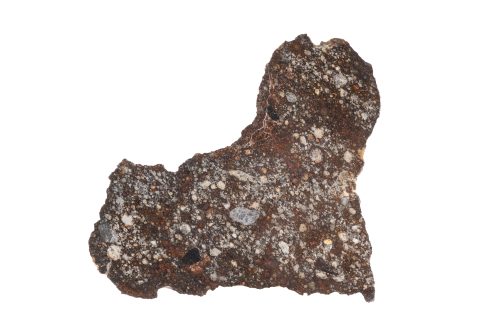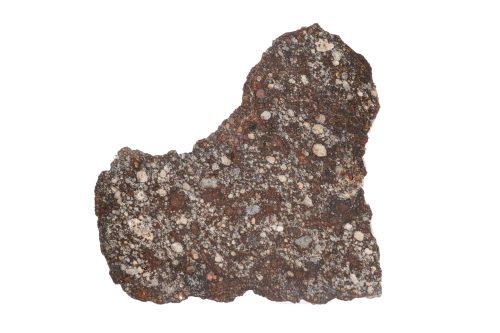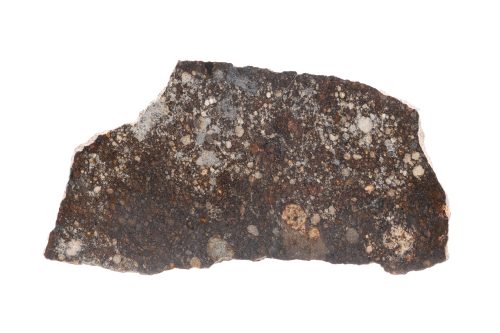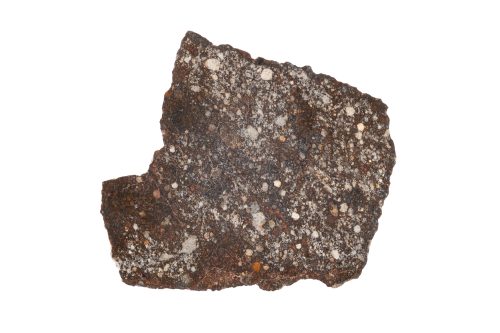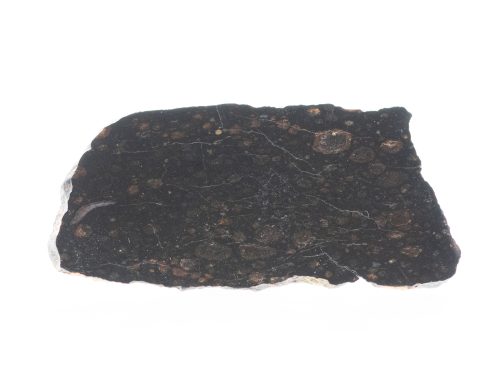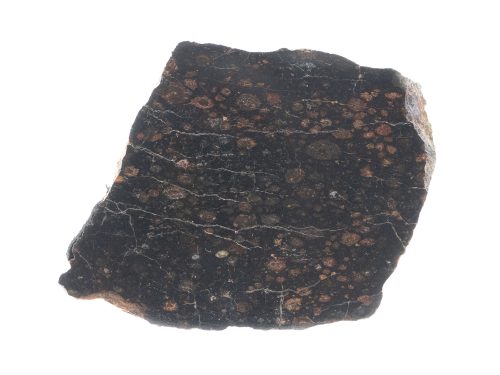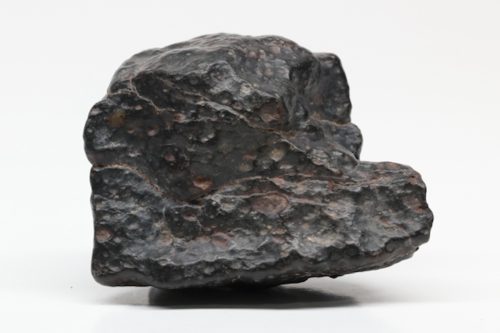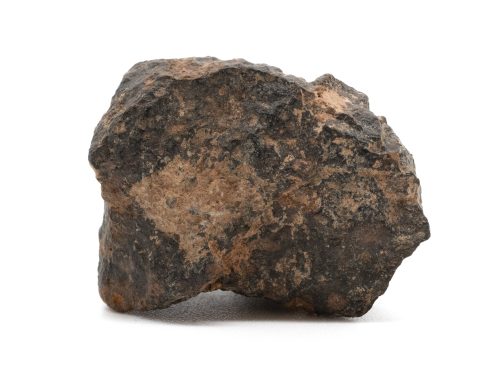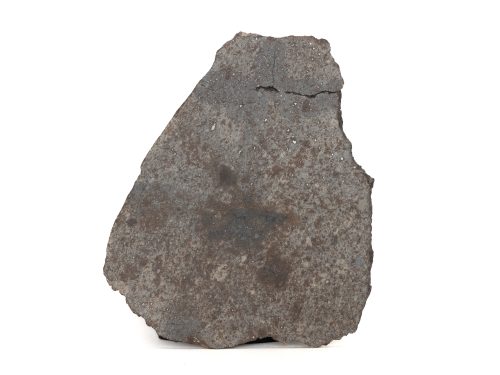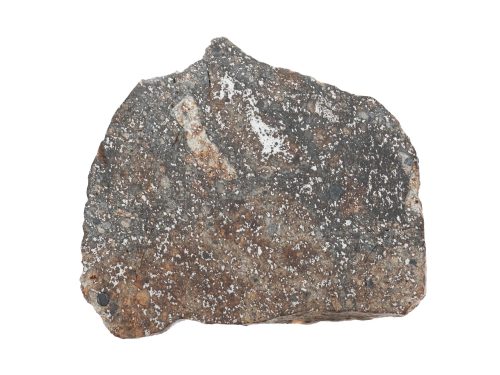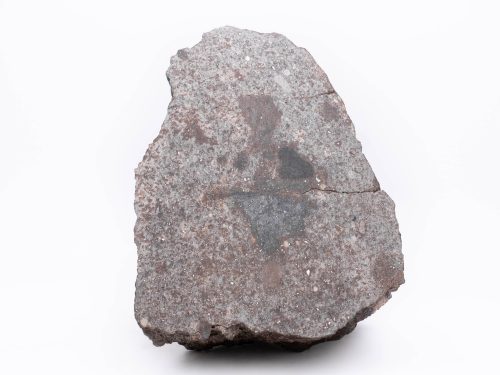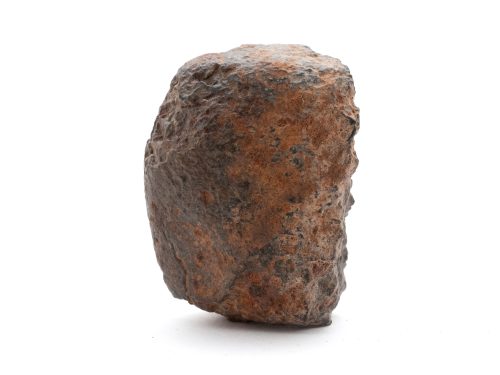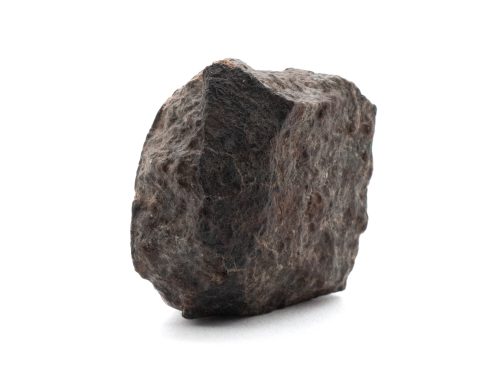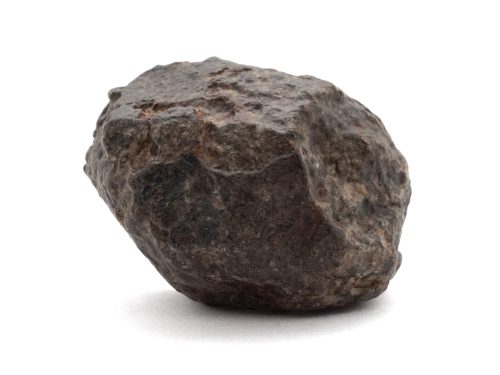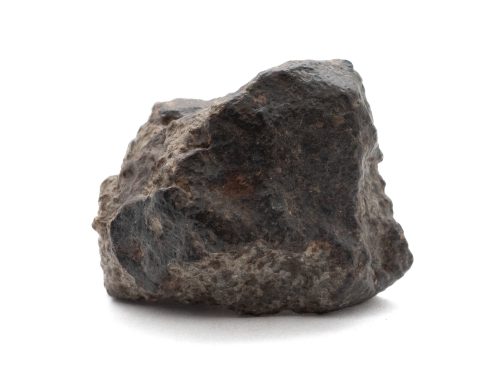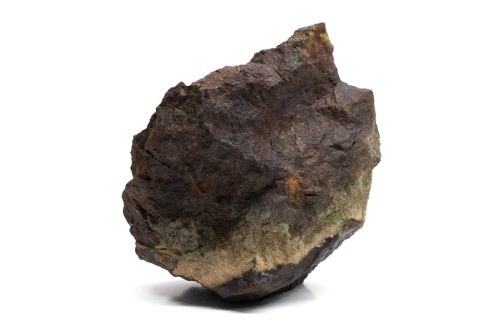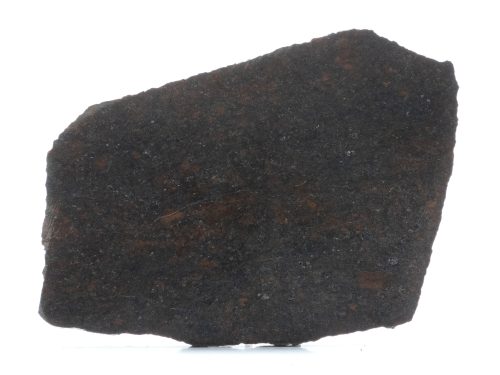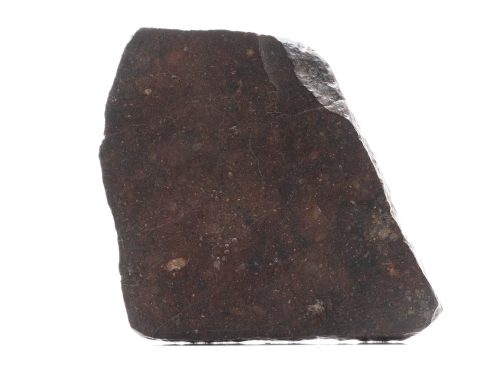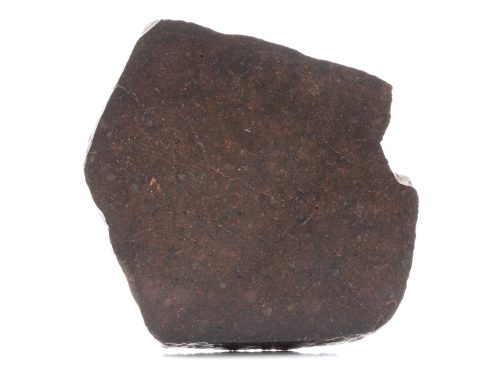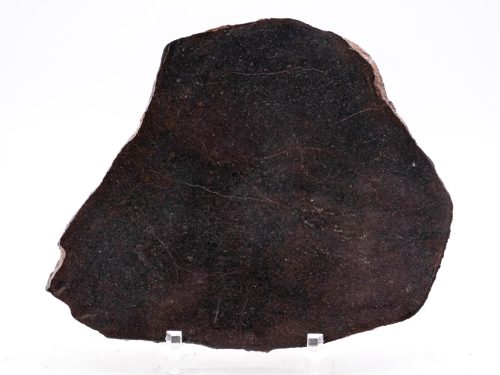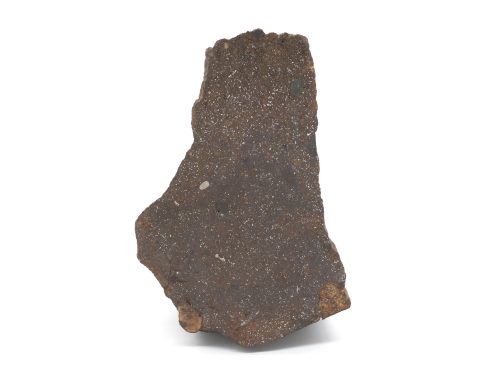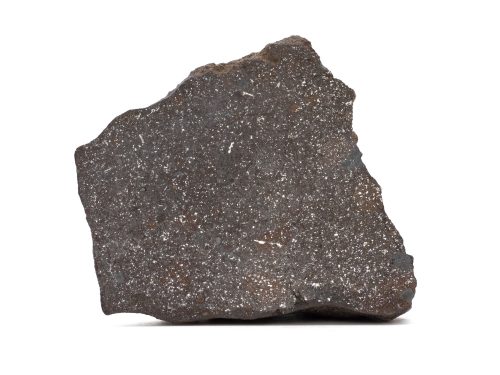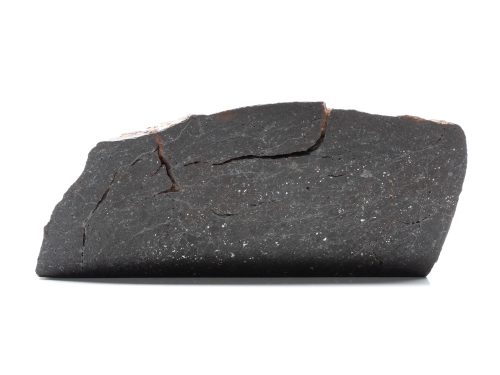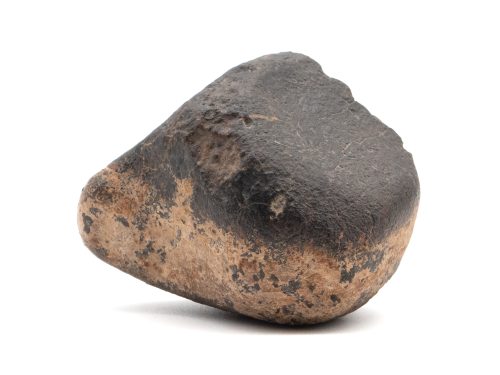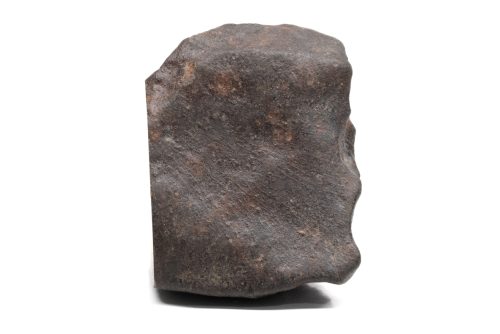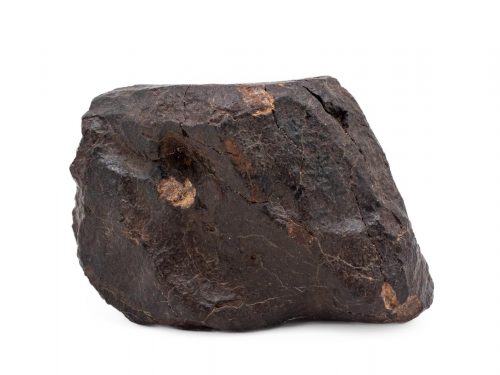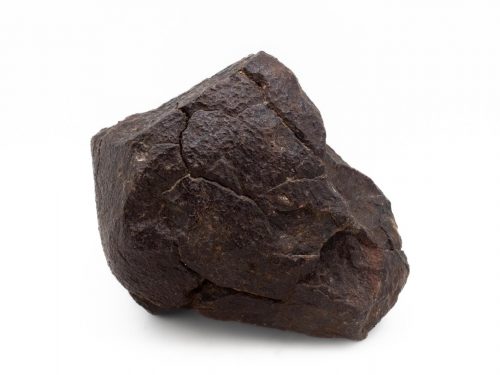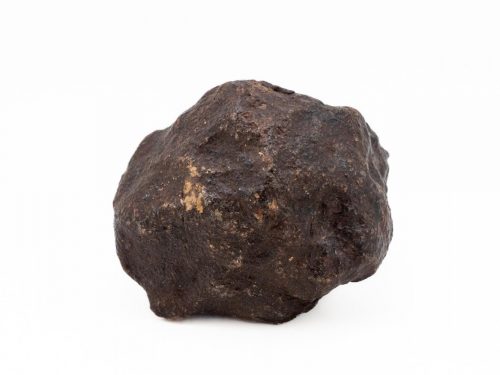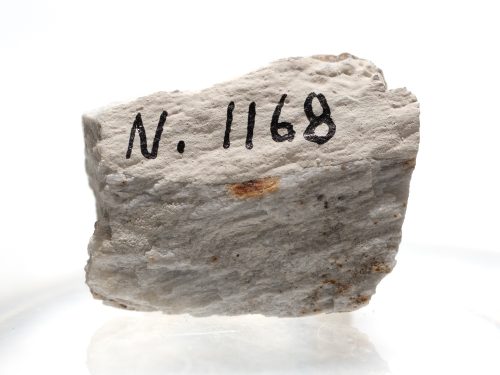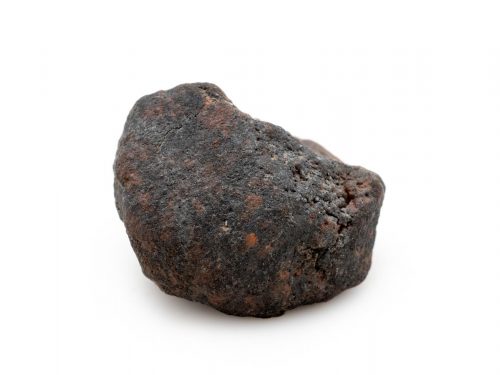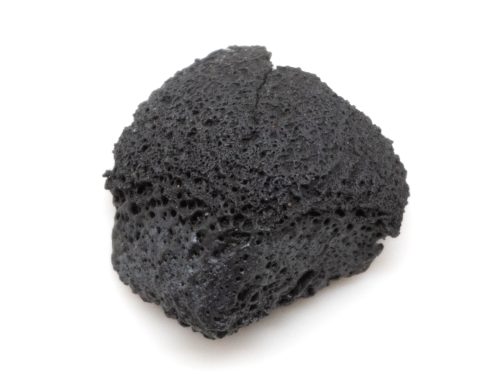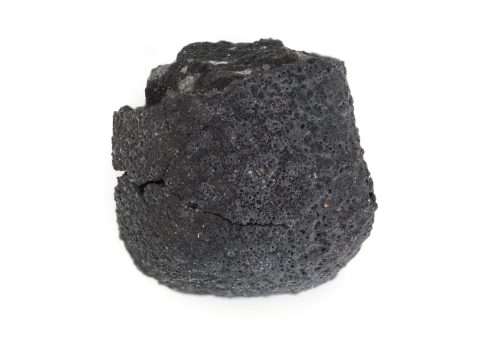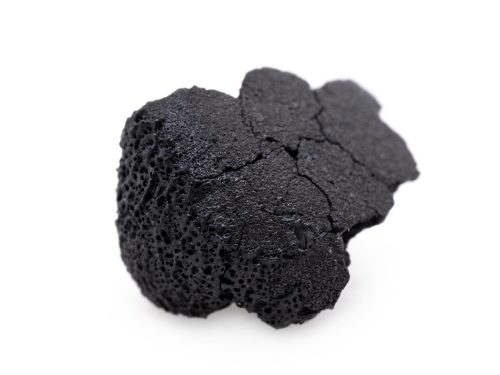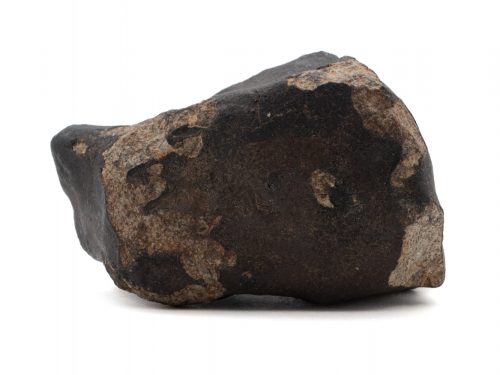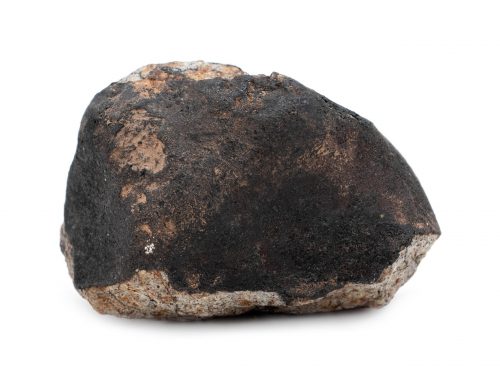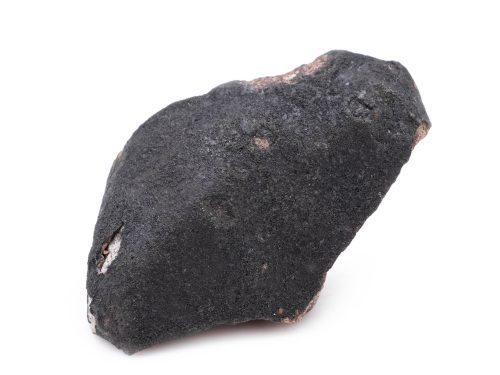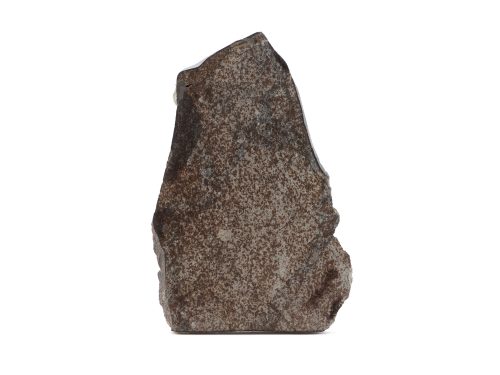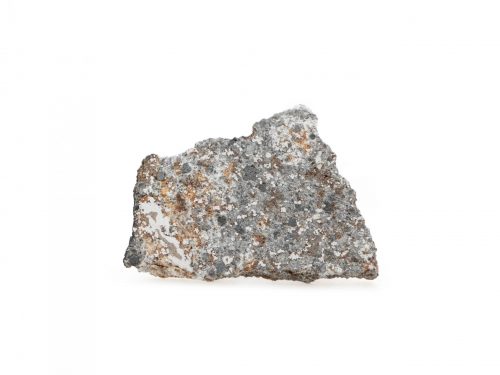Stone Meteorites For Sale
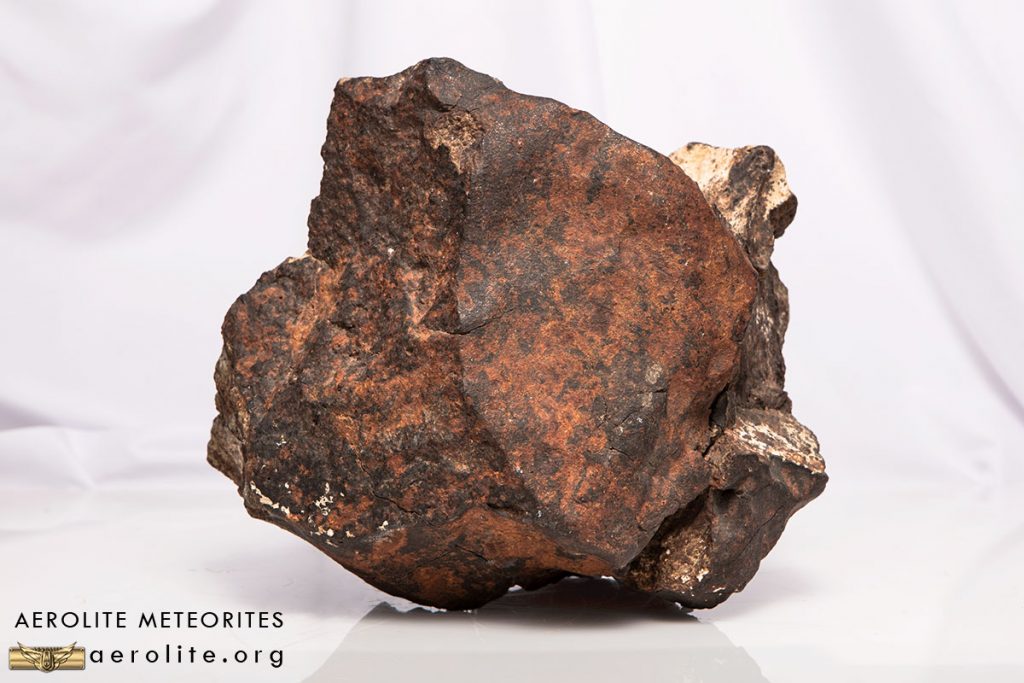
Stones constitute the largest group of meteorites. They originated in the outer crust of a planet or asteroid. Recently-fallen stone meteorites are covered by a thin, black rind known as fusion crust, which forms as the rock’s surface is burned during flight. Fusion crust is fragile and deteriorates easily, so stone meteorites that have been on the surface of our planet for a long time have a similar appearance to Earth rocks. Visible inside most stone meteorites are tiny, glassy, spheres known as chondrules. Forged at the very dawn of the solar system, these chondrules are far older than our own planet. Some stone meteorites, known as carbonaceous chondrites, have been found to contain water, salt, and even amino acids. In the distant past, these meteorites may have carried the very building blocks of life to Earth.
For those looking to buy stone meteorites, our catalog of available pieces is presented here in alphabetical order. Click on any image for additional photographs. All specimens are fully guaranteed and we pride ourselves on outstanding customer service. Please contact us directly with questions.
Explore our wide collection of Stone Meteorites For Sale
Aba Panu Abadla 002 Aguas Zarcas Al Haggounia 001 Allende Bassikounou Bencubbin Camel Donga Carancas Chelyabinsk Clarendon (c) Dalgety Downs Dar al Gani (DaG) 521 Dimmitt Djoua 001 Gao-Guenie Gold Basin Grapevine Mesa Hamilton Hammadah al Hamra 346 Homestead Jiddat al Harasis 264 Kainsaz Labenne Sahara Millbillillie Murchison Mvskoke Merkv Nagjir 001 New Orleans Northwest Africa 10514 | Eucrite Northwest Africa 11174 | H5 Northwest Africa 11342 | Diogenite Northwest Africa 11615 | LL3 Northwest Africa 11700 | H4 Northwest Africa 12217 | Achondrite-ung Northwest Africa 12322 | CV3 Northwest Africa 12925 | CK5 Northwest Africa 13279 | CV3 Northwest Africa 13758 | R3 Northwest Africa 13917 | Winonaite Northwest Africa 14613 | H5 Northwest Africa 15468 | OC4-melt breccia Northwest Africa 15662 | LL3 Northwest Africa 15953 | Diogenite Northwest Africa 16181 | LL3 Northwest Africa 16242 | CV3 Northwest Africa 4502 | CV3 Northwest Africa 5950 | CV3 Northwest Africa 7454 | CV3 Northwest Africa 7457 | L5-melt breccia Northwest Africa 7678 Northwest Africa 7831 | Diogenite Northwest Africa 869 | L3-6 Northwest Africa XXX | Unclassified Stones Norton County Nuevo Mercurio NWA 10102 Punggur Sebkha el Melah 001 Sidi El Habib 001 Tank Mountains Tarda Tassédet 004 Thika Thuathe Tsarev Viñales Zag Zhob-
Sale!

Aguas Zarcas 0.9g
Original price was: $112.00.$95.00Current price is: $95.00. Add to cart -
Sale!

Aguas Zarcas 2.30g
Original price was: $287.00.$238.00Current price is: $238.00. Add to cart -
Sale!

Aguas Zarcas 30.1g
Original price was: $3,750.00.$3,185.00Current price is: $3,185.00. Add to cart -
Sale!

Aguas Zarcas 6.6g
Original price was: $825.00.$700.00Current price is: $700.00. Add to cart -
Sale!

Aguas Zarcas 85.0g
Original price was: $10,625.00.$9,725.00Current price is: $9,725.00. Add to cart -
Sale!

Aguas Zarcas 0.61g
Original price was: $75.00.$63.00Current price is: $63.00. Add to cart -
Sale!

Aguas Zarcas 1.01g
Original price was: $125.00.$105.00Current price is: $105.00. Add to cart -
Sale!

Aguas Zarcas 13.0g
Original price was: $1,625.00.$1,380.00Current price is: $1,380.00. Add to cart -
Sale!

Aguas Zarcas 3.6g
Original price was: $545.00.$465.00Current price is: $465.00. Add to cart -
Sale!

Aguas Zarcas 6.3g
Original price was: $945.00.$805.00Current price is: $805.00. Add to cart
Allende Slices
At approximately 4 am on the morning of October 16, 2006 a shower of stones fell in and around the village of Bassikounou in the southeast corner of Mauritania, near the border with Mali. Many stones, including this one, were picked up very shortly after the fall in a 8 km strewnfield, and as a result the pristine black fusion crust has been perfectly preserved.
Chelyabinsk Individuals
Gao-Guenie Individuals
Gold Basin Fragments
Gold Basin Slices
-
Sale!

Grapevine Mesa 0.59g
Original price was: $251.00.$231.00Current price is: $231.00. Add to cart -
Sale!

Grapevine Mesa 1.08g
Original price was: $459.00.$399.00Current price is: $399.00. Add to cart -
Sale!

Grapevine Mesa 1.11g
Original price was: $472.00.$378.00Current price is: $378.00. Add to cart
-

NWA 11700 14.5g
$29.00 Add to cart -

NWA 11700 17.9g
$36.00 Add to cart -

NWA 11700 19.7g
$39.00 Add to cart -

NWA 11700 19.9g
$40.00 Add to cart -

NWA 11700 21.2g
$42.00 Add to cart -

NWA 11700 21.3g
$43.00 Add to cart -

NWA 11700 21.8g
$44.00 Add to cart -

NWA 11700 22.2g
$44.00 Add to cart -

NWA 11700 26.5g
$53.00 Add to cart -

NWA 11700 38.0g
$76.00 Add to cart -

NWA 11700 46.1g
$92.00 Add to cart
-

NWA 12925 0.9g
$31.00 Add to cart -

NWA 12925 1.6g
$56.00 Add to cart -

NWA 12925 1.7g
$59.00 Add to cart -

NWA 12925 1.8g
$63.00 Add to cart -

NWA 12925 2.2g
$77.00 Add to cart -

NWA 12925 2.4g
$84.00 Add to cart -

NWA 12925 3.0g
$105.00 Add to cart -

NWA 12925 3.5g
$122.00 Add to cart -

NWA 12925 4.7g
$164.00 Add to cart
NWA 5950 Individuals
NWA 869 Slices
NWA 869 Individuals
-

NWA 869 114.2g
$228.00 Add to cart -

NWA 869 22.8g
$46.00 Add to cart -

NWA 869 23.8g
$48.00 Add to cart -

NWA 869 27.5g
$55.00 Add to cart -

NWA 869 27.9g
$56.00 Add to cart -

NWA 869 29.5g
$59.00 Add to cart -

NWA 869 33.2g
$66.00 Add to cart -

NWA 869 38.8g
$78.00 Add to cart -

NWA 869 60.4kg
$43,995.00 Add to cart
NWA XXX End Cuts
NWA XXX Individuals
-

Northwest Africa XXX 303.6g
$595.00 Add to cart -

NWA XXX 1158.7g
$869.00 Add to cart -

NWA XXX 1575.1g
$1,181.00 Add to cart -

NWA XXX 2760.1g
$2,070.00 Add to cart -

NWA XXX 3780.1g
$2,835.00 Add to cart -

NWA XXX 5.8kg
$3,190.00 Add to cart -

NWA XXX 500.1g
$450.00 Add to cart -

Oriented Chondrite Meteorite Puzzle 2,929.0g
$5,955.00 Add to cart
-

Tassédet 004 125.3g
$501.00 Add to cart -

Tassédet 004 132.9g
$532.00 Add to cart -

Tassédet 004 172.4g
$690.00 Add to cart -

Tassédet 004 174.4g
$698.00 Add to cart -

Tassédet 004 194.2g
$777.00 Add to cart -

Tassédet 004 49.0g
$196.00 Add to cart -

Tassédet 004 69.2g
$277.00 Add to cart -

Tassédet 004 72.0g
$288.00 Add to cart -

Tassédet 004 72.8g
$291.00 Add to cart -

Tassédet 004 73.9g
$296.00 Add to cart -

Tassédet 004 35.2g
$245.00 Add to cart
